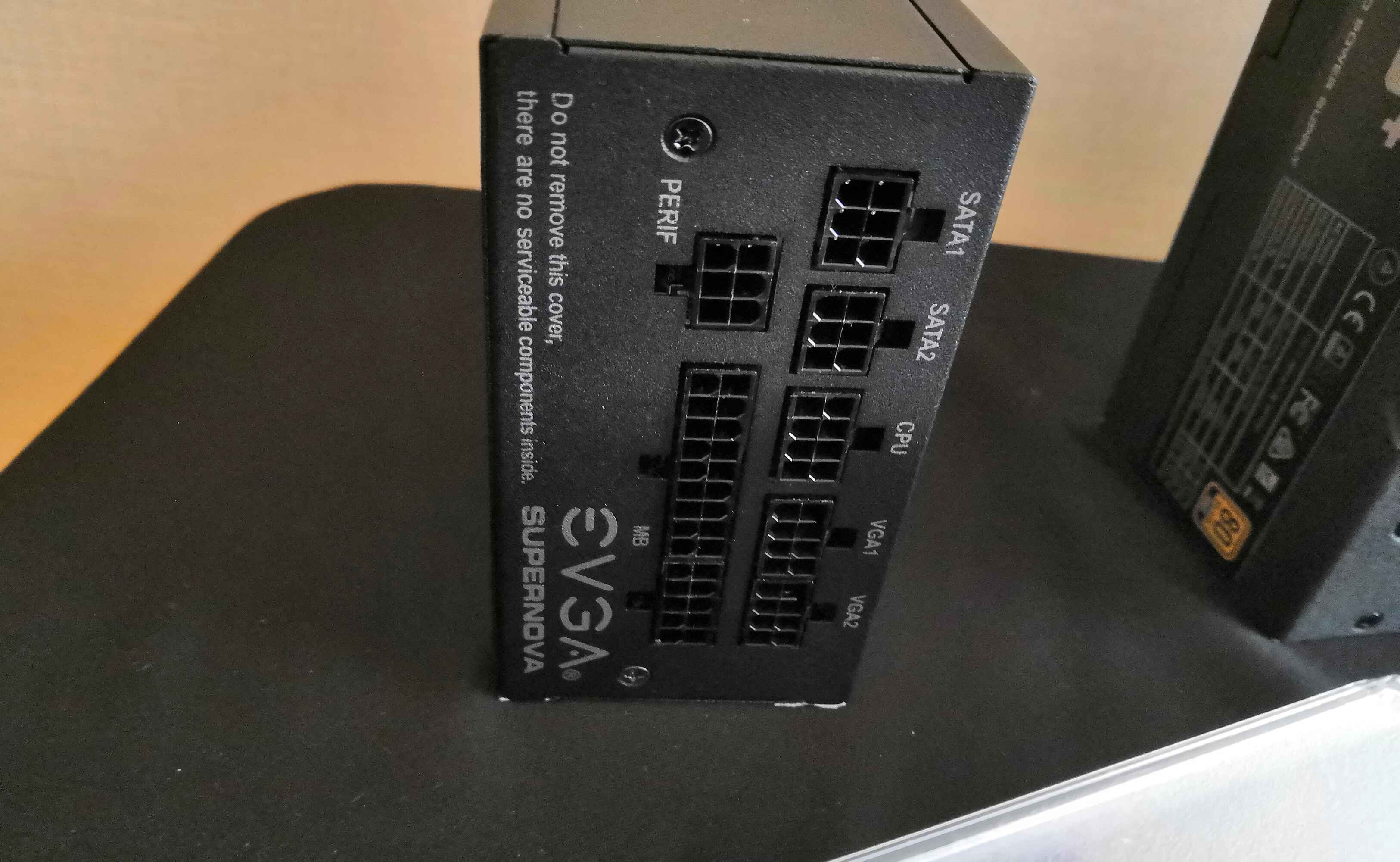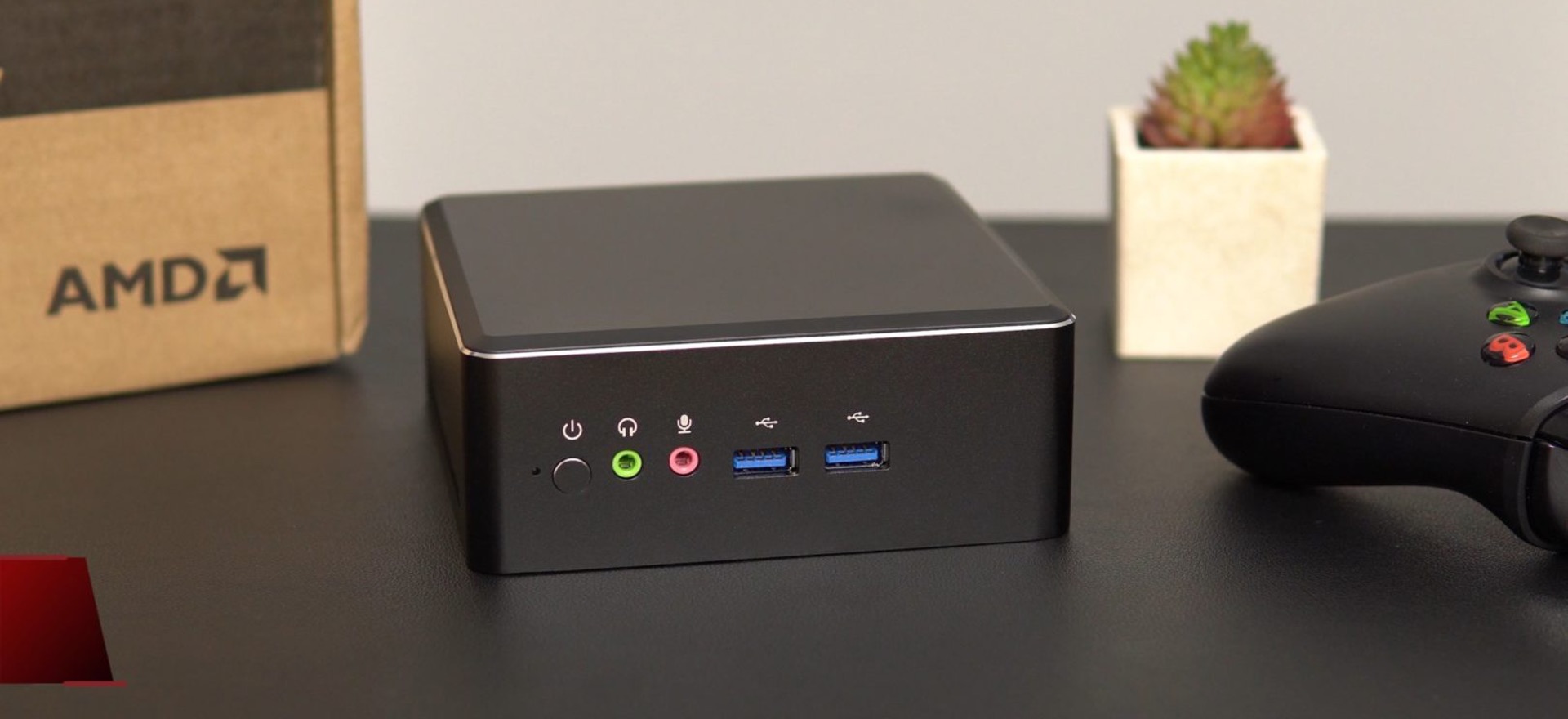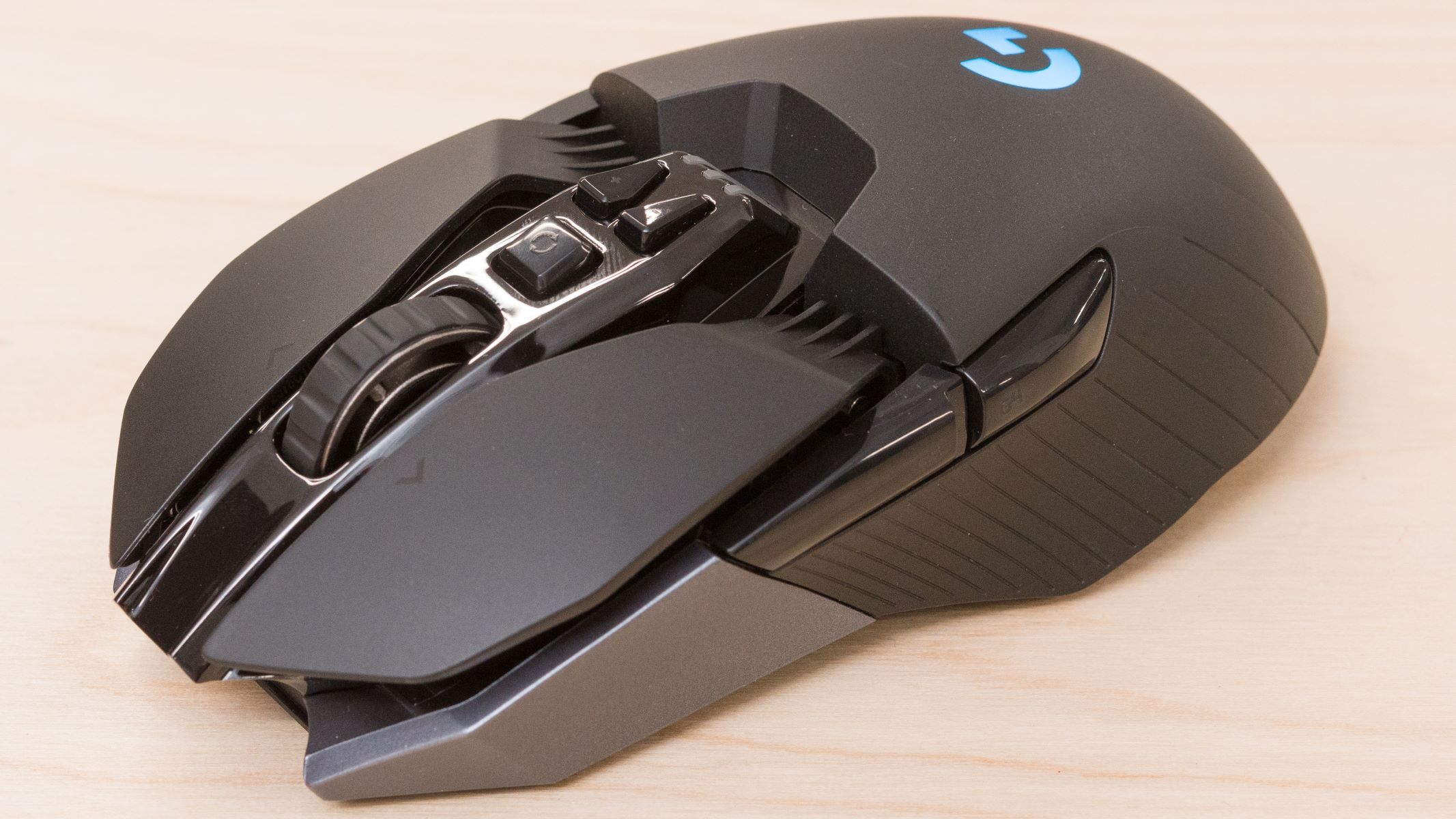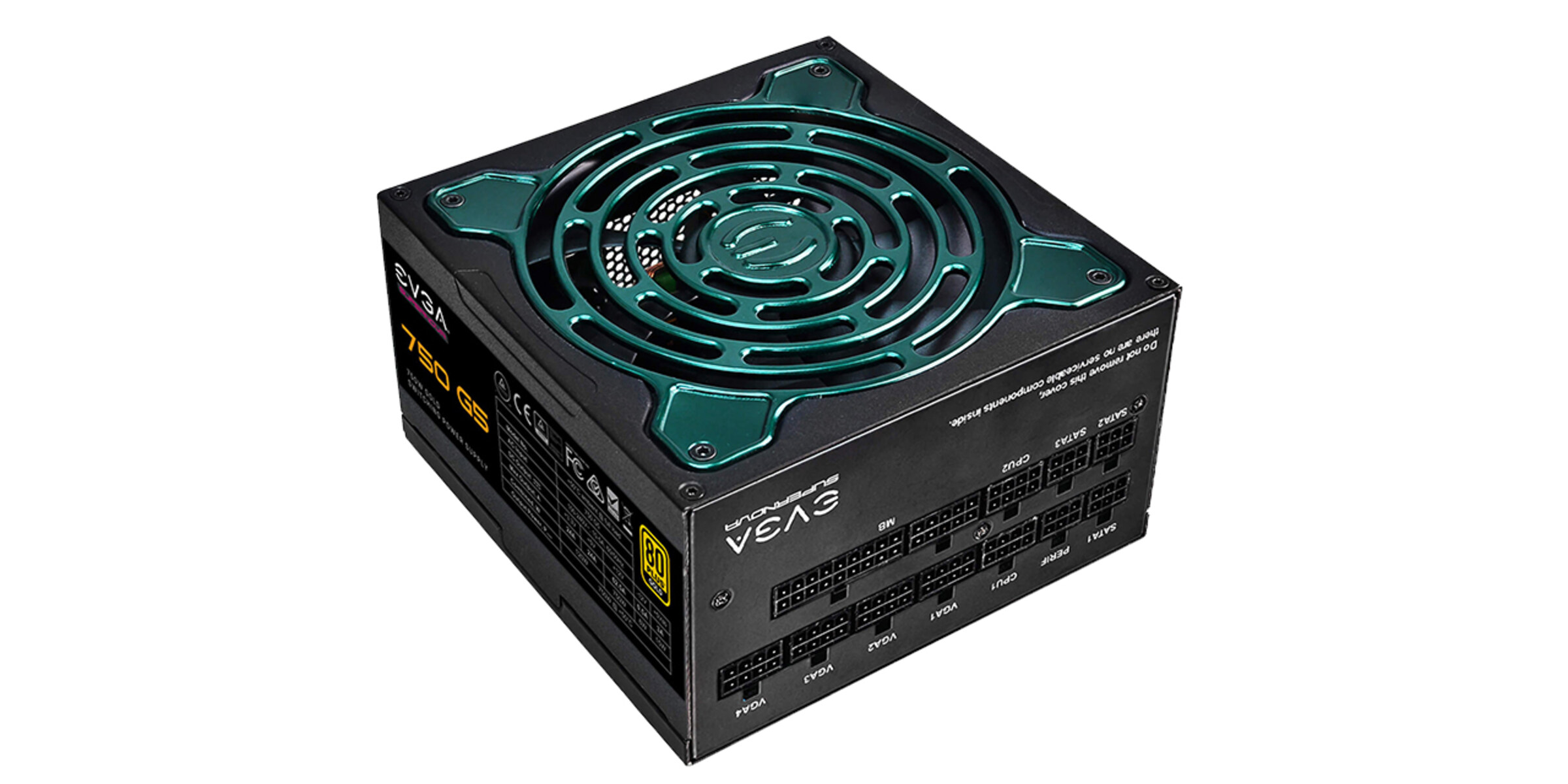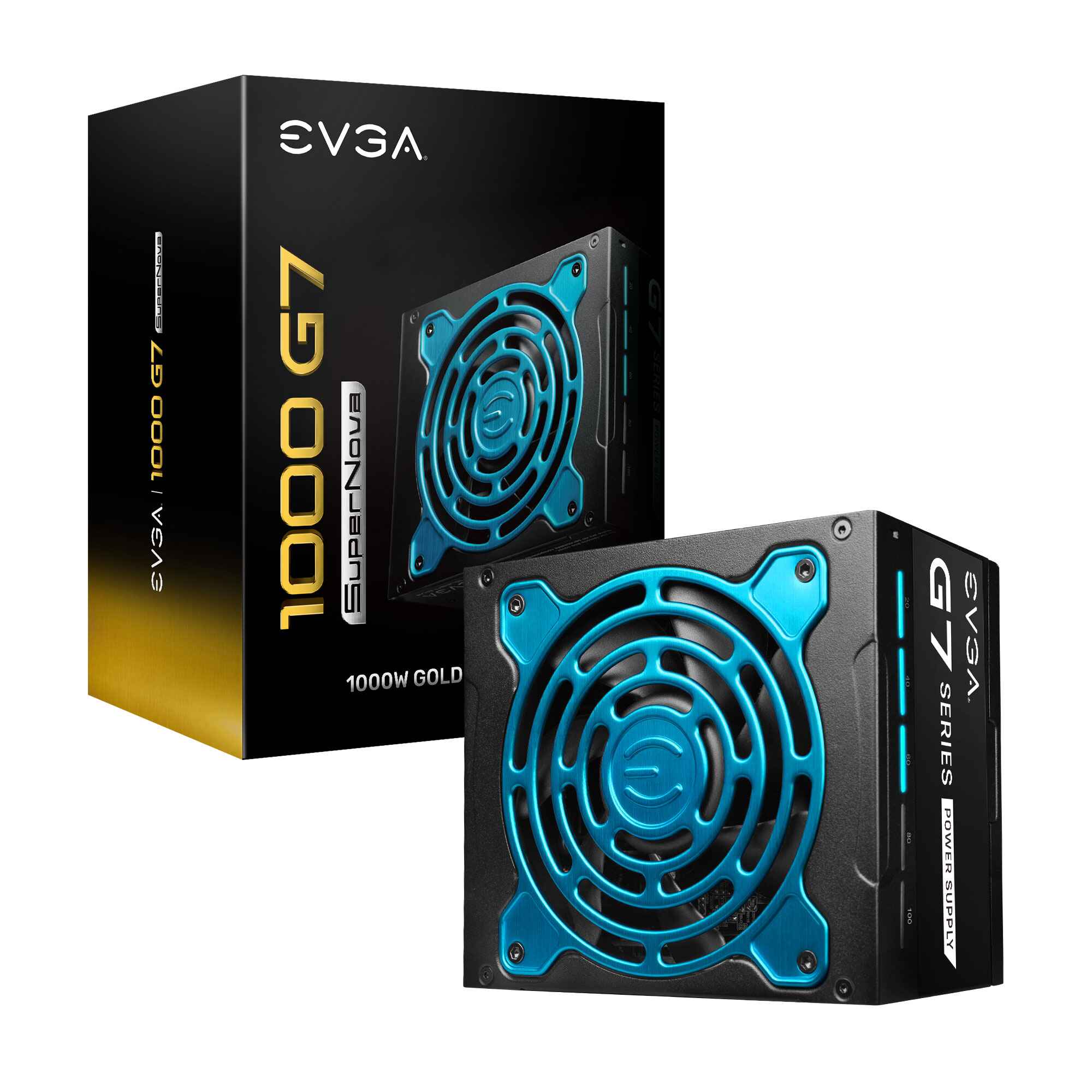Introduction
Welcome to the comprehensive guide on how to convert Dentrix G6 Workstation to a Server. Dentrix G6 is a powerful dental practice management software that allows dentists to streamline their operations and improve patient care. By converting a Dentrix G6 workstation to a server, you can centralize your practice data, enhance data security, and enable multiple users to access the software simultaneously.
This step-by-step guide will walk you through the process of converting a Dentrix G6 workstation to a server, ensuring a smooth transition and minimizing any potential disruptions to your practice. It is important to note that this guide assumes you have a basic understanding of computer networks and are familiar with Dentrix G6 software.
Before diving into the conversion process, it’s crucial to back up all data and properly prepare your workstation. This ensures that your data remains intact and easily accessible throughout the conversion process. Additionally, it is recommended to work with an IT professional if you are unsure about any technical aspects of the conversion.
The steps outlined in this guide will cover the installation of the server operating system, configuration of network settings, installation of Dentrix G6 server software, transferring data from the workstation to the server, updating the server and workstation clients, configuring client workstations to connect to the server, and testing the Dentrix G6 server connection. Additionally, troubleshooting tips for common issues will be provided.
By following this guide, you will be well-equipped to convert your Dentrix G6 workstation to a server, improving the efficiency and accessibility of your dental practice. Let’s get started with the backup and preparation phase of the conversion process.
Backup and Preparation
Before beginning the process of converting your Dentrix G6 Workstation to a Server, it is crucial to perform a thorough backup of all your practice data. This ensures that your data remains safe and accessible throughout the conversion process. Here are the essential steps to follow for backup and preparation:
- Backup Data: Start by backing up all Dentrix G6 data from the workstation. This includes patient records, appointments, financial information, and any other practice-specific data. Dentrix provides a built-in backup utility that you can use to create a full backup of your data. It is recommended to make multiple backups and store them in separate locations for added security.
- Verify Backup: After creating the backups, it is important to verify that they are complete and error-free. Take the time to double-check the backups to ensure that all critical data has been successfully captured. This step provides assurance that your data is safe and can be easily restored if needed.
- Prepare Workstation: Next, ensure that the Dentrix G6 workstation is in optimal condition before proceeding with the conversion. This includes performing necessary software updates, ensuring adequate disk space, and checking for any hardware issues. If there are any pending updates, it is recommended to install them before starting the conversion process.
- Allocate Sufficient Server Resources: Assess the requirements of your dental practice to determine the appropriate server resources needed. This includes analyzing the number of concurrent users, storage space, and processing power. Properly allocating server resources ensures optimal performance and user experience.
- Choose Server Operating System: Select the server operating system that best fits your practice’s needs. Dentrix G6 is compatible with popular server operating systems like Windows Server 2016 or 2019. It is crucial to choose a stable and supported operating system for long-term reliability and security.
By following these steps, you will ensure that your practice data is securely backed up and your workstation is properly prepared for the conversion process. The backup provides a safety net in case of any unforeseen issues, and the workstation preparation guarantees a smooth transition to a server environment. With the backup completed and the workstation ready, you are now prepared to install the server operating system, as detailed in the next section.
Installing the Server Operating System
Once you have completed the backup and preparation phase, the next step in converting your Dentrix G6 Workstation to a Server is to install the server operating system. The server operating system provides the foundation for running the Dentrix G6 server software and enables multiple users to access the software simultaneously. Here’s how to install the server operating system:
- Prepare Installation Media: Obtain the installation media for your chosen server operating system. This can be in the form of a DVD or a USB drive. Make sure that you have a valid license key for the operating system.
- Boot the Workstation: Insert the installation media into the workstation’s DVD drive or USB port. Restart the workstation and enter the BIOS setup to change the boot order, ensuring that the workstation boots from the installation media.
- Start the Installation Process: Once the workstation has booted from the installation media, follow the prompts to start the installation process. Choose the language, time zone, and other preferences as necessary.
- Select the Installation Type: Depending on the server operating system, you may be presented with different installation types. Choose the option to install the operating system as a server, rather than a workstation or desktop.
- Partition and Format the Hard Drive: During the installation process, you will be prompted to partition and format the hard drive. It is recommended to create separate partitions for the operating system, programs, and data. This allows for better organization and prevents potential issues in the future.
- Follow Installation Prompts: Continue following the installation prompts, providing necessary information such as username, password, and network settings. Ensure that you choose a strong password for the server, as it will help protect your practice data.
- Complete the Installation: Once all the necessary information has been provided, the installation process will continue. After a successful installation, the workstation will reboot, and you will be ready to proceed with the configuration of network settings.
By carefully following these steps, you will be able to install the server operating system smoothly and pave the way for the installation of the Dentrix G6 server software. Configuring the network settings is the next crucial step, as it allows for proper communication between the Dentrix server and client workstations, which will be covered in the upcoming section.
Configuring Network Settings
After successfully installing the server operating system, the next step in converting your Dentrix G6 Workstation to a Server is to configure the network settings. Proper network configuration is essential for seamless communication between the Dentrix G6 server and client workstations. Here’s how to configure the network settings:
- Assign a Static IP Address: To ensure a stable and consistent connection, it is recommended to assign a static IP address to the server. This prevents the IP address from changing and avoids any potential connectivity issues. Consult your network administrator or refer to your server operating system’s documentation to learn how to assign a static IP address.
- Configure DNS Settings: DNS (Domain Name System) settings translate domain names into IP addresses, allowing computers to locate and communicate with each other on a network. Consult your network administrator or internet service provider (ISP) to obtain the appropriate DNS server addresses and configure them on the server.
- Set Up DHCP: DHCP (Dynamic Host Configuration Protocol) allows for automatic IP address assignment on client workstations, eliminating the need for manual configuration. If you have a DHCP server on your network, ensure it is properly configured and capable of assigning IP addresses to the client workstations.
- Configure Firewalls and Ports: If you have a firewall installed on the server, ensure that it allows incoming and outgoing connections for Dentrix G6. Open the necessary ports (such as port 443 for SSL) to enable secure communication between the server and client workstations. Consult your firewall documentation for instructions on how to configure these settings.
- Test Network Connectivity: Once the network settings are configured, test the network connectivity between the server and client workstations. Ping the server’s IP address from a client workstation to verify a successful connection. Additionally, check if the client workstations can access the internet and other network resources.
Properly configuring the network settings ensures seamless communication between the Dentrix G6 server and client workstations, allowing for smooth operation of the dental practice management software. In the next section, we will cover the process of installing the Dentrix G6 server software onto the server.
Installing Dentrix G6 Server Software
With the network settings properly configured, you are now ready to install the Dentrix G6 Server software on your converted workstation. The Dentrix G6 Server software allows for centralized management of your dental practice data and enables multiple users to access the software simultaneously. Follow the steps below to install the Dentrix G6 Server software:
- Locate the Dentrix G6 Server Installation File: Ensure that you have the Dentrix G6 Server installation file ready. This file is typically provided by your Dentrix representative or can be downloaded from the Dentrix website if you have an active support contract.
- Run the Installation File: Double-click on the Dentrix G6 Server installation file to start the installation process. Follow the prompts to begin the installation.
- Accept the License Agreement: Read and accept the Dentrix G6 Server license agreement to proceed with the installation. It is important to review and understand the terms and conditions before proceeding.
- Choose Installation Location: Select the destination folder where you want the Dentrix G6 Server software to be installed. It is recommended to choose a location on the server’s main hard drive for faster access.
- Select Additional Components: Depending on your specific needs, you may be given the option to select additional Dentrix G6 components to install. Choose the components that are relevant to your practice and click “Next” to continue.
- Configure Database Settings: Dentrix G6 requires a database for storing practice data. During the installation process, you will be prompted to configure the database settings. Choose the appropriate database type (e.g., MS SQL Server) and provide the necessary information, such as the server name, username, and password.
- Complete the Installation: After providing the necessary information, click “Next” to complete the Dentrix G6 Server software installation. The installation process may take a few minutes.
- Verify the Installation: After the installation is complete, verify that the Dentrix G6 Server software has been successfully installed. Check for any error messages or issues that may have occurred during the installation process.
With the Dentrix G6 Server software successfully installed, you can now proceed to the configuration of the Dentrix G6 Server. This configuration step ensures that the server is properly set up to manage the practice data and allows for seamless synchronization with the client workstations, which will be covered in the next section.
Configuring Dentrix G6 Server
Once you have installed the Dentrix G6 Server software on your converted workstation, the next step is to configure the server settings. Configuring the Dentrix G6 Server is essential for optimal performance and ensures that the server is properly set up to manage the practice data. Follow the steps below to configure the Dentrix G6 Server:
- Launch Dentrix G6 Server Configuration Utility: Locate and launch the Dentrix G6 Server Configuration Utility, which is usually installed along with the Dentrix G6 Server software. This utility allows you to configure various server settings.
- Configure Practice Information: Enter your dental practice information, such as the practice name, address, contact details, and any other relevant information. This ensures that your practice details are accurately reflected throughout the Dentrix G6 software.
- Set Database Connection: Configure the database connection settings to establish a connection between the Dentrix G6 Server and the database you set up during the installation process. Enter the necessary information, such as the database server name, username, and password.
- Configure User Access: Decide on user access permissions and security settings for the Dentrix G6 Server. You can set up different user roles and assign appropriate access levels to ensure that only authorized users can access sensitive data within the system.
- Set Backup and Maintenance Schedule: Establish a backup and maintenance schedule for the Dentrix G6 Server. Regular backups are essential to protect your practice data and ensure that you can easily recover in case of any data loss. Schedule automated backups and maintenance tasks to keep your server running smoothly.
- Test Server Connection: Once you have configured the server settings, it is crucial to test the server connection from client workstations. Ensure that the client workstations can connect successfully to the Dentrix G6 Server and access the practice data. Troubleshoot any connection issues that may arise during this testing phase.
By following these steps, you will be able to configure the Dentrix G6 Server to suit your practice needs. The configuration process ensures that your practice information is accurately reflected, establishes a secure connection to the database, sets user access permissions, and schedules regular backups and maintenance. With the Dentrix G6 Server configured, the next step is to transfer the Dentrix data from the workstation to the server, which will be covered in the upcoming section.
Transferring Dentrix Data from Workstation to Server
Once you have successfully configured the Dentrix G6 Server, the next crucial step is to transfer the Dentrix data from the workstation to the server. This ensures that all your patient records, appointments, financial information, and other practice-specific data are accessible from the centralized server. Here’s how to transfer the Dentrix data:
- Create a Data Transfer Plan: Before starting the data transfer, it is essential to plan the process. Determine the optimal time to transfer the data, ensuring minimal disruption to your practice operations. Communicate the data transfer plan with your team to ensure everyone is aware of the process.
- Run the Dentrix Data Conversion Utility: Dentrix provides a Data Conversion Utility that facilitates the transfer of data from the workstation to the server. Ensure that you have the latest version of the Data Conversion Utility and run it on the workstation.
- Select the Source Data Folder: In the Data Conversion Utility, specify the folder where the Dentrix data is located on the workstation. This typically includes the Dentrix database files, document files, and any other associated data files.
- Specify the Destination Folder: Choose the destination folder on the Dentrix G6 Server where you want the data to be transferred. This should be the location where you configured the database settings during the Dentrix G6 Server installation.
- Start the Data Transfer: Once the source and destination folders are specified, start the data transfer process. The Data Conversion Utility will transfer the Dentrix data from the workstation to the server, ensuring that all practice data is successfully migrated.
- Verify Data Transfer: After the data transfer is complete, verify that all the Dentrix data has been successfully transferred to the server. Compare the data on the server with the data on the workstation to ensure consistency and accuracy.
- Perform Data Validation: It is essential to perform data validation after the transfer to ensure that all the transferred data is complete and intact. Validate patient records, appointments, financial information, and any other critical data to ensure the accuracy of the transferred data.
By following these steps, you can seamlessly transfer the Dentrix data from the workstation to the server, ensuring that all practice-specific information is accessible from the Dentrix G6 Server. With the data successfully transferred, the next step is to update the Dentrix G6 Server and workstation clients to the latest version, which will be covered in the upcoming section.
Updating Dentrix G6 Server and Workstation Clients
Once the Dentrix data has been transferred to the server, it’s important to ensure that both the Dentrix G6 Server and the workstation clients are updated to the latest version. Keeping your software up-to-date ensures that you have access to the latest features, bug fixes, and security enhancements. Here’s how to update the Dentrix G6 Server and workstation clients:
- Check for Available Updates: Visit the Dentrix website or contact your Dentrix representative to check for any available updates for both the Dentrix G6 Server and the workstation clients. Download the latest updates and ensure that you have the necessary installation files.
- Update the Dentrix G6 Server: Start by updating the Dentrix G6 Server. Launch the Dentrix G6 Server Configuration Utility and navigate to the “Updates” section. Follow the prompts to install the latest updates for the server software. It is crucial to carefully follow the installation instructions provided with the update.
- Update Workstation Clients: Once the Dentrix G6 Server is updated, it’s time to update the workstation clients. Copy the installation files for the updated Dentrix G6 client software to each workstation. Launch the installation file on each workstation and follow the prompts to update the client software to the latest version.
- Test Server-Client Communication: After updating both the Dentrix G6 Server and the workstation clients, test the server-client communication to ensure that all the workstations can connect to the server successfully. This involves verifying that the client workstations can access the patient data, make appointments, and perform other necessary functions.
- Verify Data Consistency: It is important to verify the consistency of the data between the Dentrix G6 Server and the workstation clients after the update. Ensure that all the patient records, appointments, and other practice data are consistent across all the workstations and the server.
- Train Users on New Features: If the Dentrix G6 update introduces new features or changes to the user interface, conduct training sessions to familiarize your team with the updates. This ensures that everyone can make the most of the updated Dentrix G6 software and take advantage of any new tools or functionalities.
By following these steps, you can ensure that both the Dentrix G6 Server and the workstation clients are updated to the latest version. Keeping the software up-to-date enhances efficiency, functionality, and security within your dental practice. With the Dentrix G6 Server and workstation clients updated, you are one step closer to configuring the client workstations to connect to the server, which will be covered in the upcoming section.
Configuring Client Workstations to Connect to the Server
Once the Dentrix G6 Server and workstation clients are updated to the latest version, the next step is to configure the client workstations to connect to the server. Configuring the client workstations allows them to access the Dentrix G6 software and interact with the practice data stored on the centralized server. Here’s how to configure the client workstations:
- Launch the Dentrix G6 Client Software: Start by launching the Dentrix G6 client software on each workstation. Depending on your network configuration, you may need administrative privileges to make the necessary changes.
- Enter Server Connection Details: In the Dentrix G6 client software, enter the connection details to establish a connection with the Dentrix G6 Server. This includes providing the server name or IP address, database name, and the appropriate credentials to authenticate the connection. Consult your network administrator or the Dentrix documentation for the correct server connection details.
- Test Client-Server Connection: After entering the server connection details, test the connection between each client workstation and the Dentrix G6 Server. Ensure that the client workstations can successfully connect to the server and access the practice data. Troubleshoot any connectivity issues that may arise during this testing phase.
- Configure Workstation Printers and Scanners: If your dental practice utilizes printers and scanners connected to the client workstations, configure them to work with the Dentrix G6 software. Make sure that the printers and scanners are properly installed and configured on each workstation to ensure seamless printing and scanning functionality.
- Validate Data Synchronization: After configuring the client workstations, validate the data synchronization between the Dentrix G6 Server and the workstations. Ensure that any changes made on a workstation are successfully reflected across all the workstations and the server. This ensures data consistency and eliminates any discrepancies.
- Train Users on Workstation Usage: If there are any changes or updates to the Dentrix G6 client software, provide training for your team to familiarize them with the updated features and functionalities. Ensure that users are comfortable navigating the client software and making use of all the available tools and options.
By following these steps, you can successfully configure the client workstations to connect to the Dentrix G6 Server. This allows for seamless access to the practice data and facilitates efficient collaboration among the members of your dental practice. With the client workstations connected to the server, you are now ready to test the Dentrix G6 Server connection, as covered in the next section.
Testing the Dentrix G6 Server Connection
After configuring the client workstations to connect to the Dentrix G6 Server, it’s important to test the server connection to ensure that everything is functioning properly. Testing the Dentrix G6 Server connection allows you to verify that the client workstations can successfully communicate with the server and access the practice data. Follow these steps to test the Dentrix G6 Server connection:
- Launch the Dentrix G6 Client Software: Begin by launching the Dentrix G6 client software on a client workstation.
- Enter User Credentials: Enter the user credentials that have been configured to access the Dentrix G6 Server. This will typically include a username and password associated with the user’s role and access level.
- Connect to the Dentrix G6 Server: After entering the user credentials, attempt to connect to the Dentrix G6 Server by selecting the appropriate connection option within the client software. This will initiate a connection attempt to the server using the provided credentials.
- Verify Access to Practice Data: Once the connection is established, verify that the client workstation can successfully access the practice data stored on the Dentrix G6 Server. This includes validating the ability to view patient records, schedule appointments, and perform other necessary tasks within the software.
- Perform Data Synchronization: Make changes to the practice data on the client workstation and verify that the changes are synchronized with the Dentrix G6 Server and reflected across all connected workstations. This ensures that data synchronization is working effectively.
- Test File Attachments and Document Accessibility: If your dental practice utilizes file attachments and other document features within Dentrix G6, test the accessibility of these files from the client workstations. Ensure that users can view and access these files without any issues.
- Verify Printing and Scanning Functionality: Test the printing and scanning functionality from the client workstations to ensure that they are properly connected to the printers and scanners configured within Dentrix G6. Print test documents and scan files to verify that these functions are working as intended.
- Perform Stress Testing: To further test the Dentrix G6 Server connection, simulate a high load on the server by having multiple users perform various tasks simultaneously. This will help identify any potential performance issues or bottlenecks that may arise under heavy usage.
By diligently following these steps, you can ensure that the Dentrix G6 Server connection is robust and functioning smoothly. Testing the server connection allows you to validate the accessibility of practice data, synchronization of changes, file attachments, and printing and scanning functionality. With the Dentrix G6 Server connection successfully tested, you are well on your way to streamlining your dental practice management processes.
Troubleshooting Common Issues
During the process of converting your Dentrix G6 Workstation to a Server, you may encounter various challenges or issues. It is important to be prepared to troubleshoot and resolve these issues to ensure a smooth transition and uninterrupted operation of your dental practice. Here are some common issues that you might encounter and troubleshooting steps to address them:
- Connection Issues: If you are experiencing difficulties connecting the client workstations to the Dentrix G6 Server, ensure that the network settings and server configuration settings are correct. Check the firewall settings on both the server and client workstations, and verify that the client workstations have the correct server IP address or server name entered.
- Data Transfer Problems: If you are encountering issues during the data transfer process, double-check that you have followed the correct steps outlined in the data transfer section. Verify that the source and destination folders are accurate, and ensure that the Dentrix Data Conversion Utility is compatible with the version of Dentrix G6 you are using.
- Software Compatibility: If you are experiencing compatibility issues between Dentrix G6 and other software installed on the client workstations, ensure that all software applications are updated to their latest versions. Check the Dentrix website or contact support to confirm that the software versions you are using are compatible with each other.
- Performance Concerns: If you notice slow performance or lag when accessing Dentrix G6 from client workstations, verify that the server and client workstations meet the recommended system requirements. Consider upgrading hardware or adjusting server settings to optimize performance. Run regular maintenance tasks such as disk cleanup and defragmentation to improve system performance.
- Backup and Data Recovery: If you encounter issues with data backup or face the need for data recovery, ensure that you have a reliable backup strategy in place. Review your backup procedures and verify that backups are being performed regularly. Consult with an IT professional if data recovery becomes necessary to ensure the best chances of successful restoration.
- User Access and Permissions: If there are user access or permission issues, review the Dentrix G6 server configuration settings and ensure that user roles and permissions are set correctly. Double-check that user credentials are entered accurately on the client workstations and that the appropriate access levels have been assigned.
When troubleshooting any issues, it is recommended to consult the Dentrix documentation, contact support, or seek assistance from an IT professional who is familiar with Dentrix G6. Properly addressing and resolving common issues as they arise will help ensure the smooth operation of your dental practice management system.
Conclusion
Congratulations on successfully converting your Dentrix G6 Workstation to a Server! By following the steps outlined in this comprehensive guide, you have centralized your practice data, enhanced data security, and enabled multiple users to access the Dentrix G6 software simultaneously. You have also learned how to configure network settings, install the server operating system, transfer data from the workstation to the server, update the Dentrix G6 Server and workstation clients, configure client workstations to connect to the server, test the server connection, and troubleshoot common issues.
Converting your Dentrix G6 Workstation to a Server offers numerous benefits, including improved efficiency, enhanced data accessibility, and streamlined practice management. By centralizing your data and enabling multiple users to access Dentrix G6, you have taken a significant step towards optimizing your dental practice operations.
Remember to regularly update your Dentrix G6 Server and workstation clients to ensure you have access to the latest features, bug fixes, and security enhancements. Additionally, maintaining a reliable backup strategy and performing regular data backups will safeguard your practice data in case of unforeseen issues.
Should you encounter any challenges during the conversion process or face any issues down the line, refer back to this guide for troubleshooting steps. Don’t hesitate to reach out to the Dentrix support team or consult with an IT professional who is familiar with Dentrix G6 for additional assistance.
By successfully converting your Dentrix G6 Workstation to a Server and following best practices, you can optimize your dental practice management, improve patient care, and ensure the smooth operation of your practice. Embrace the potential of Dentrix G6 and enjoy the benefits of a centralized and efficient dental practice management system.









